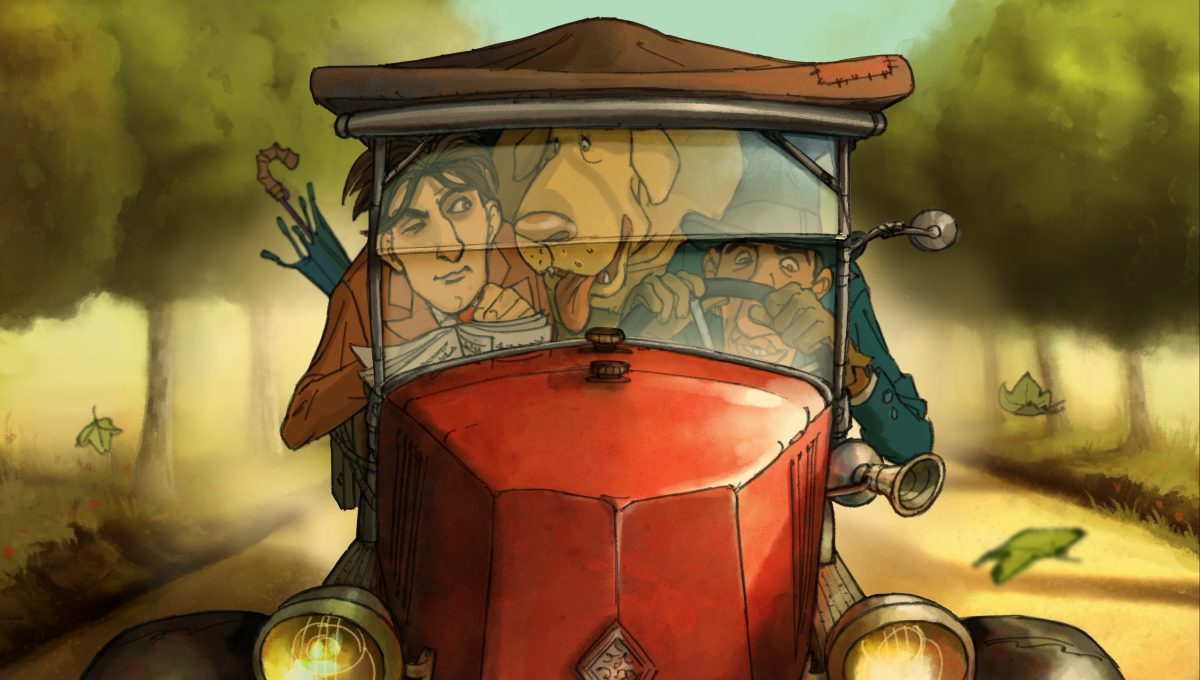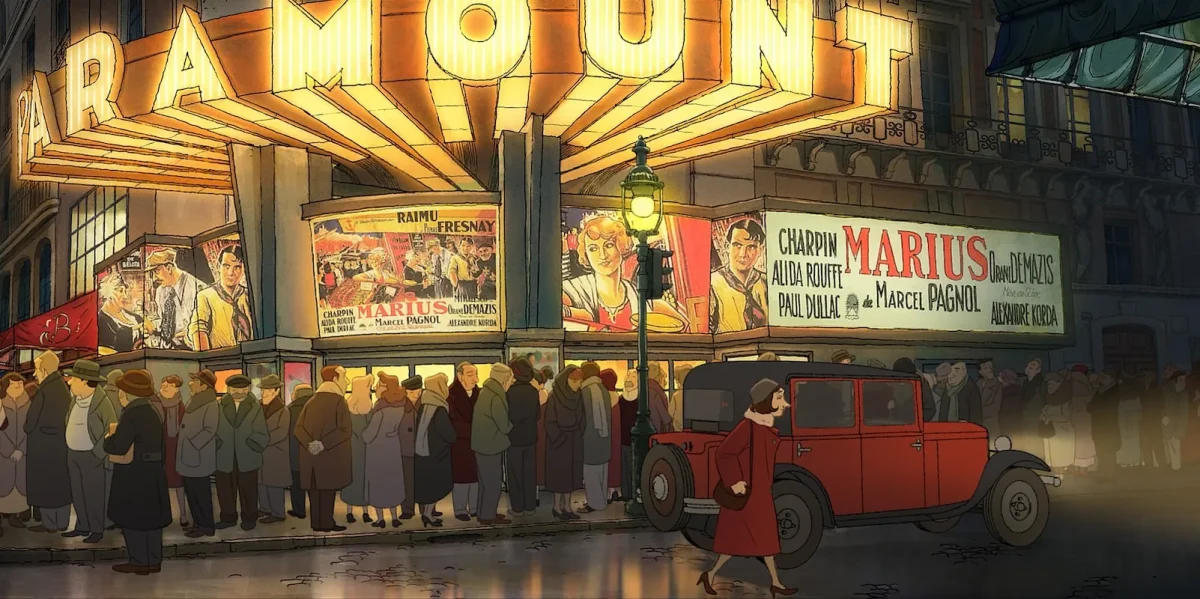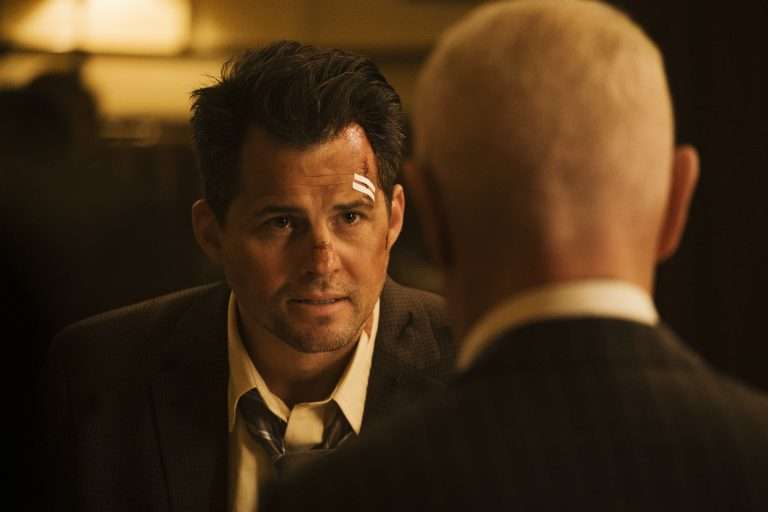With “The Triplets of Belleville,” Sylvain Chomet paid tribute to the collective cultural footprints of New York, Paris, and Montreal. With “The Illusionist,” Chomet paid tribute to the soft comedic quietude of Jacques Tati. And with the opening scene of “Joker: Folie à Deux,” Chomet paid tribute to the notion that even an unmitigated dumpster fire can have a single watchable scene as long as it’s guest-directed by somebody else entirely. Now comes “A Magnificent Life,” which finds the animator paying tribute to the work of an undisputed titan of French cinema.
The “of French cinema” part is essential here, as Marcel Pagnol’s is a name unlikely to turn the heads of burgeoning global cinephiles to the same reverential—if often distant—degree as Lumière or Cocteau. Chomet, however, is entirely aware of this reality, which is why “A Magnificent Life” is just as much about enshrining Pagnol’s legacy as it is about affirming its uniquely local appeal, encased in the thick parlance of a rural Marseillaise accent.
This legacy begins, as so many do, at the end, with an older Marcel Pagnol (Laurent Lafitte) reckoning with his waning relevance as a playwright who can’t even sell out a theater the size of a broom closet. Approached with the prospect of an artist’s profile for a young publication called Elle Magazine, Pagnol struggles to even remember the eventful life that had led him to this more modest twilight period.

More Read: The 25 Best Animated Movies of All Time
Pagnol’s memory needs coaxing, and as it turns out, all he needs to do so is a mysterious and jovial young child who appears, semi-translucent, across the course of his own life and the lives of those around him in those recollected moments. This is Marcel in his pre-teen years, and this ghostly figure will push the aged Pagnol into recalling a life filled with artistic strife and rewarding payoff, from the stage to the silver screen, and back again.
Originally conceived as a documentary on the life of the legendary artist, Chomet’s animated segments proved rich enough to inspire a complete change in direction, shifting “A Magnificent Life” into a biopic recounted in unorthodox style. In truth, this isn’t the first animated biopic, but Chomet’s particular vision of hand-drawn visuals lends an unhurried sense of pacing befitting a film that splits its time between provincial France and a Paris clouded by the memory of when the City of Lights was but a distant dream.
And in part, that’s the problem. Chomet’s now-signature visual stamp—whose fusion of soft hues and harsh figure lines splits the difference somewhere between “Popeye” and Ralph Bakshi—undoubtedly lends to this air of local decompression, but so too does that very sentiment appear somewhat antithetical to the sprawl of such a figure’s detailed history. In “A Magnificent Life,” a figure made mythical in France and largely unsung in the rest of the filmgoing world is shown to be instrumental in the French transition to talkies, a distinct combatant against Nazi-occupied propaganda, and a key figure in the postwar trans-Atlantic collaboration that would define America’s place within the French cinema sphere. And this is all just in the second half of a 90-minute feature!

Also Read: All Studio Ghibli Movies, Ranked
Chomet puts in his best effort to add further shaping to Pagnol’s strained relationship with his father, as well as that which develops between the artist and his longtime collaborator Raimu (a wonderfully curt Thierry Garcia). Those dynamics shared with his siblings, the revolving door of lovers, and the head of Nazi-controlled Continental Films, Alfred Greven? Not so much.
In A Magnificent Life, Chomet’s first dialogue-heavy animation, his search for rhythm shows in how the words try to hold together fragments of memory. As Pagnol revisits his past to shape his own legacy, we, too, move through those moments, trying to see why they mattered to him in the first place.
The film stays close to the regional spirit that made Pagnol’s work so personal to his admirers. The Marseille accent, treated as both pride and humor, becomes central to his story. Chomet shows how Pagnol held on to it even while knowing that the wider French audience might never see its worth. Nobody, then, can deny that Sylvain Chomet has, in painting Pagnol’s life in broad strokes, taken the pains to foreground the potential inaccessibility of his subject and, in a sense, illustrate his more insulated appeal. After an amusing 90 minutes, though, one wonders whether it was the point for outsiders to leave the film just as hazy to Pagnol’s accomplishments as when they entered—and, more to the point, whether that continued ignorance was even intended.



![Vada Chennai [2018] Review – A Gripping Slow-Burn Crime Drama](https://79468c92.delivery.rocketcdn.me/wp-content/uploads/2018/10/Vada-Chennai-2018-768x475.jpg)


![Gantumoote [2019] Amazon Prime Review – Torn-away pages from the diary of a Kannada girl](https://79468c92.delivery.rocketcdn.me/wp-content/uploads/2020/10/Gantumoote-Movei-768x427.jpg)

![Ken Russell Craziness: Savage Messiah [1972]](https://79468c92.delivery.rocketcdn.me/wp-content/uploads/2019/12/savage-768x576.jpg)